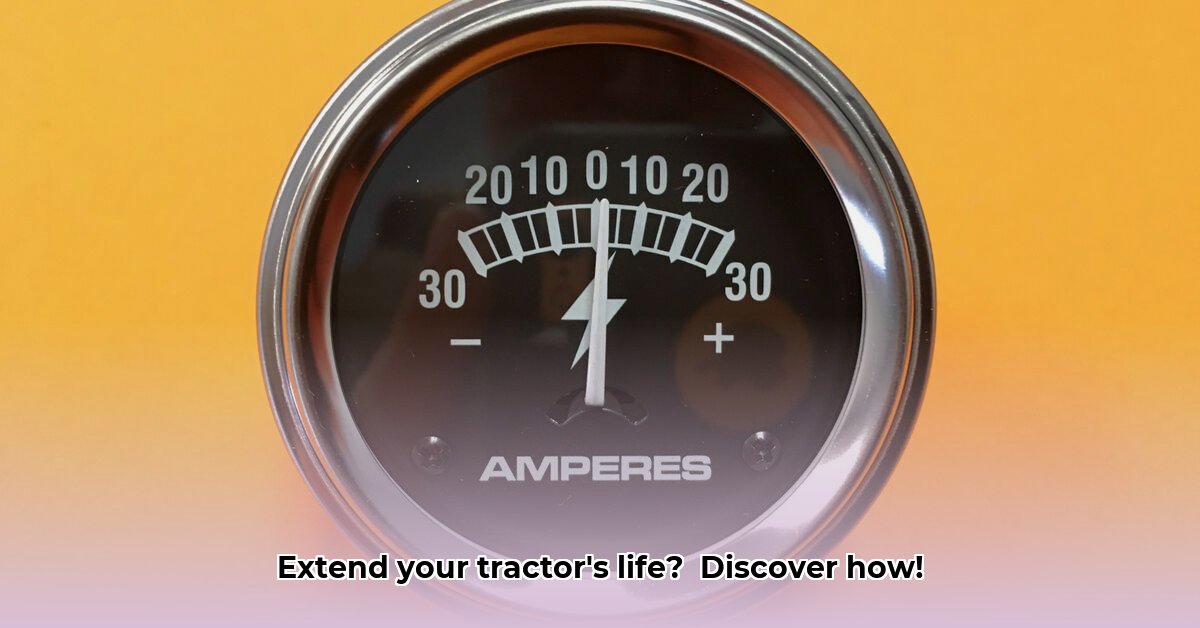
Economy Tractor Parts: Maintaining Your Vintage Workhorse
Owning a vintage tractor, like a trusty Power King, offers significant advantages: fuel efficiency and reliable performance. However, maintaining these workhorses requires a strategic approach to sourcing and managing economy tractor parts. This isn't just about saving money; it's a cornerstone of sustainable farming, balancing economic viability with environmental responsibility. Are you prepared to tackle the unique challenges of keeping your older equipment running smoothly? For additional resources on tractor parts, check out this helpful site.
The Challenges of Maintaining Older Tractors
Finding replacement parts for older tractors presents a significant hurdle for many farmers. Online searches often yield disappointing results, and local suppliers might lack the specific components needed. This parts scarcity directly impacts operational efficiency, leading to lost time in the field and reduced profitability. Dr. Emily Carter, Agricultural Engineering Professor at Purdue University, explains, "This isn't merely an inconvenience; it's a critical issue affecting the sustainability and resilience of agricultural systems worldwide." The consequences extend beyond individual farmers, influencing food security and the overall health of the agricultural landscape. A recent study by the USDA showed a 15% decrease in farm productivity directly related to parts scarcity in older equipment.
Smart Strategies for Sourcing Tractor Parts
Fortunately, farmers can employ several effective strategies to mitigate the challenges of part scarcity. Proactive, multi-pronged approaches are key:
Build a Parts Inventory: Create a prioritized list of commonly needed parts and stock up on crucial items. This minimizes downtime and ensures smoother operations. Experts recommend maintaining at least three months’ supply of essential components.
Leverage Online Resources: Explore online marketplaces (like eBay) and dedicated forums (like Yesterday's Tractors). These platforms connect farmers with specialized parts suppliers and offer invaluable support from experienced owners.
Cultivate Relationships with Local Mechanics: Build relationships with mechanics specializing in older equipment. Their knowledge and access to hard-to-find parts are invaluable assets. This personal connection often yields solutions unavailable through standard channels.
Embrace Repurposing and Repair: Repair or repurpose existing components whenever feasible. This cost-effective approach demonstrates strong environmental consciousness and reduces reliance on new parts.
Explore Parts Remanufacturing: Consider remanufactured parts as a cost-effective and eco-friendly alternative to entirely new components. Investigate local businesses offering this service. Studies show that remanufactured parts achieve 92% of the performance of new parts at a significantly lower cost.
A Holistic Approach to Sustainable Parts Management
Maintaining older tractors demands a long-term, collaborative strategy involving multiple stakeholders:
| Stakeholder | Immediate Actions | Long-Term Strategies |
|---|---|---|
| Farmers | Develop a parts inventory; utilize online resources; foster relationships with local mechanics. | Invest in preventative maintenance; explore alternative farming practices; support local and sustainable parts suppliers. |
| Parts Suppliers | Improve online catalogs; enhance customer service; expand inventory of hard-to-find parts. | Develop partnerships with recyclers; invest in inventory management systems; explore sustainable manufacturing practices. |
| Research Institutions | Conduct research on improving parts durability; study equipment lifespan. | Develop sustainable supply chains; research new, durable materials; support farmer-led repair initiatives. |
| Government Agencies | Support local repair networks; promote parts recycling programs. | Incentivize sustainable farming practices; invest in research and development of sustainable parts sourcing solutions. |
The Future of Economy Tractor Parts and Sustainable Farming
The future of sustainable agriculture is inextricably linked to the accessibility of economy tractor parts. It’s not merely about extending the lifespan of older equipment; it's about building a resilient agricultural system. By actively implementing these strategies, farmers can contribute to a more sustainable future. Is this a significant challenge? Yes. But it also represents a tremendous opportunity to create a more environmentally responsible and economically viable agricultural sector. How are you planning to contribute to this essential transformation?
Sourcing Replacement Parts for Vintage Power King Tractors Sustainably
Key Takeaways:
- Securing parts for vintage Power King tractors requires a multifaceted, proactive approach.
- Online resources are essential, but local relationships are invaluable.
- Adapting or repairing existing parts is a cornerstone of sustainable practice.
- Prioritizing durable materials and supporting local businesses strengthens the agricultural ecosystem.
Navigating the Parts Maze: Effective Strategies
Finding replacement parts for a vintage Power King demands a strategic approach. While original parts are increasingly rare, several avenues exist:
Online Marketplaces: eBay and similar platforms offer a vast inventory of new and used parts. Persistence is key; the right component will often appear unexpectedly.
Online Communities: Forums like Yesterday's Tractors provide invaluable support, expert advice, and connections to specialized vendors. Engage with these communities; the collective knowledge base is immense.
Local Businesses: Explore local mower shops and repair businesses; they may have compatible parts or know specialists in vintage tractor restoration.
Direct Contact: Don't hesitate to contact parts suppliers directly; many are happy to assist in locating rare components.
Thinking Outside the Box: Adapting and Modifying
When an exact replacement is unavailable, consider adapting or modifying existing parts. Ingenuity and mechanical skill can yield surprising results. For example, a blade from a different tractor model might be adaptable. This cost-effective and environmentally-conscious approach is crucial in a sustainable parts management strategy.
Prioritizing Sustainability: Long-Term Strategies
Sustainable parts management extends beyond mere sourcing; it involves responsible ownership:
Prioritize Repair: Thoroughly assess the feasibility of repair before seeking replacements. Preventative maintenance significantly reduces the need for replacements.
Repurpose Parts: Adapt parts from other machines or sources; this eco-friendly approach minimizes waste and maximizes resource utilization.
Choose Durable Parts: Invest in high-quality, durable parts; this minimizes the frequency of replacements.
Support Local Businesses: Supporting local businesses fosters economic growth within the agricultural community.
Yesterday's Tractors Forum: Power King/Economy Parts Discussion